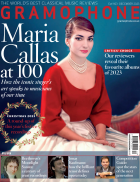Texte paru dans: / Appeared in: |
|
 |
Outil de traduction |
|
Here is another opera more familiar from the history books than in the theatre. It was staged in the Louvre in 1660 as part of the celebrations of the marriage between Louis XIV and Princess Maria Theresa of Spain. Additional dances were composed by the young Lully; the performance lasted for six hours. But what is presented here in a new critical edition is the original version, first mounted at the Teatro SS Giovanni e Paolo in Venice on January 12, 1655. The story is complicated, but comprehensible once you have got the relationships sorted out. Xerxes and Arsamene are brothers. Romilda and Adelanta are sisters, daughters of Ariodate. Both brothers love Romilda, who has eyes only for Arsamene, who is also loved by Adelanta. Amastre, Xerxes’s betrothed, has come disguised as a soldier to confront her errant lover. The libretto by Nicolò Minato is the grandfather of the anonymous text for Handel’s Serse (1738), hence the latter’s Venetian lightness of touch.
The sets by Andrea Belli are neither Achaemenid Persian, 17th-century European nor modern, but anachronistically and beautifully Islamic, with pointed arches and geometrical patterns. Backdrops are raised and lowered, one of them consisting of a series of identical images of the king: dressed in cape, riding boots and turban, his features almost concealed by sunglasses and a full beard. And that is how Xerxes appears in Giovanna Fiorentini’s costume designs, accompanied by the silent figure of Cupid, for his famous address to the plane tree, ‘Ombra mai fu’. (One’s heart sinks at ‘Beautiful, emerald sprouts’, but the subtitles do improve.) Arsamene, like the soldiers, wears a lime-green uniform; Romilda is hampered by an extravagant orange wig that makes her look more of a flibbertigibbet than she really is.
Leo Muscato’s production moves along swiftly, largely on account of a striking feature. Every aside begins and ends with a smart clap of the hands by the character speaking, time suspended as everyone else on stage freezes. The recitatives are so fleet that there are times when two or more clap simultaneously. This might irritate some; I found it effective, and you have to admire the skill shown by all concerned.
Xerxes is a formidable character: swift to anger, slow to bless, to misquote the hymn. Carlo Vistoli’s evenly spread countertenor is particularly fine in his lamento con violini near the end, ‘Lasciatemi morir, stelle spietate’. Arsamene, presumably another castrato role, is fierily taken by the mezzo Gaia Petrone. Minato’s three acts are collapsed into two: not unreasonably, as the original curtains are given to secco recitative, and it enables Carolina Lippo as Romilda to provide a strong ending to part 1. The rest of the cast, too, are excellent; if Carlo Allemano finds his part a little too high for comfort, it seems quite apt for the faintly ridiculous Ariodate. Xerxes and Amastre are united; Arsamene and Romilda likewise, but poor Adelanta is left on the shelf.
In the booklet, Federico Maria Sardelli makes the point that Cavalli’s scores are not sketches that need elaborating. The players are not listed, but the basic set-up is just two violins and continuo. All the more surprising, then, to find an intrusive cornett, fluently played but not always in tune, sometimes taking one or other of the violin parts. With that caveat, this enterprising recording can be recommended to lovers of Baroque opera. |
|




